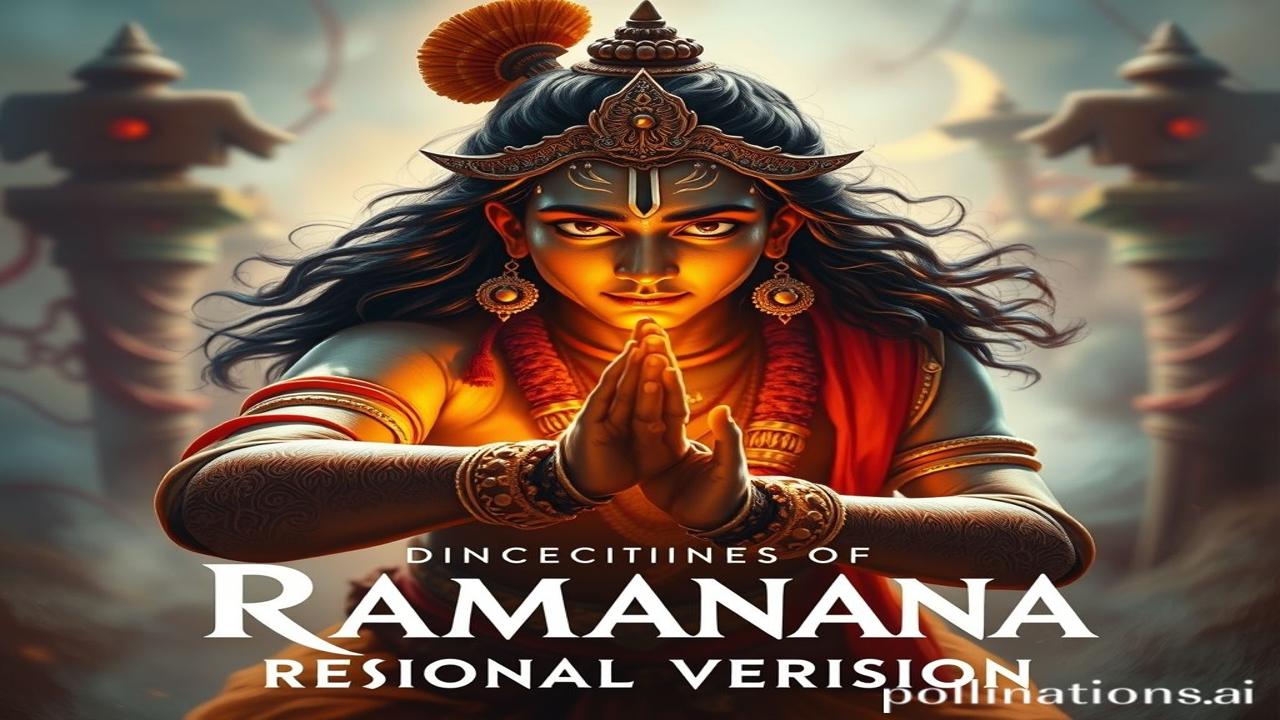Waqt Ki Dhool Mein Chhupi Ramayana: The Lesser-Known Stories
Kabhi socha hai, jab Diwali ki roshni mein hum Ramayana ke charitraon ko yaad karte hain, toh kitni kahaniyan andhere mein reh jaati hain? Hum sabko Valmiki Ramayana ka gyaan hai, lekin Bharat desh ki mitti mein toh Ram katha ke anek roop base hain. These regional versions, filled with local flavours and unique interpretations, offer a richer, more complex understanding of the epic. Let’s embark on a journey to uncover these hidden gems!
Ramayana: Ek Kahani, Anek Roop – The Historical and Cultural Canvas
The Ramayana, fundamentally, is the tale of Rama, Sita, and Hanuman, their trials and tribulations, and the ultimate triumph of good over evil. Valmiki’s Ramayana, believed to be composed around 400 BCE, is considered the Adi Kavya (the first poem) and the foundation upon which countless other versions have been built.
But the beauty of Indian culture lies in its ability to absorb and adapt. Over centuries, the Ramayana travelled across the country, each region imbuing the story with its own distinct flavour. From the tribal interpretations of Jharkhand to the philosophical adaptations in the South, the Ramayana transformed itself, reflecting the unique cultural landscape of each region.
This isn’t just about storytelling; it’s about how different communities understood and internalized the values, morals, and social structures presented in the Ramayana. It’s about how they saw themselves within the larger framework of Bharatiyata.
Zameeni Sach: Echoes of Ram in Regional Life
Imagine the daily life in a small village in Assam, where the Kirtan Ghosha (prayer hall) echoes with the tales of Rama. Picture the Oja-Pali dancers, narrating the Ramayana through vibrant movements and songs. Or think about the women in Odisha, weaving intricate patterns of Ramayana scenes into their Pattachitra paintings.
In these regions, the Ramayana isn’t just a story; it’s a living tradition. Rulers patronized local versions, artisans depicted scenes on temple walls, and saints spread the message of Rama through their devotional songs.
“Ma Sita ke liye phool chun rahi thi, uski saheliyon ne Sita ko hans kar kaha, ‘Aaj toh Raja Ram aayenge!'” This little exchange, passed down through generations, speaks volumes about the intimate connection people felt with the characters of the Ramayana.
Dharohar Aur Pehchaan: Ramayana’s Relevance Today
Even today, the echoes of these regional Ramayanas resonate in India. You can witness them in the Ramleelas of Uttar Pradesh, the Yakshagana performances of Karnataka, and the Ramcharitmanas recitations in Bihar.
These traditions are not just relics of the past; they are vibrant expressions of Indian identity. They connect us to our cultural roots, reminding us of the shared values and beliefs that bind us together. The Ramayana, in its many forms, continues to shape our understanding of dharma, karma, and the importance of family and community. It’s a thread that runs through the fabric of our Bharatiyata.
Mazedaar Tathya Ya Bhram-Bhanjak: Beyond the Usual Suspects
Myth: Ramayana is only about Rama’s journey from Ayodhya to Lanka.
Truth: Many regional versions focus on different aspects of the story. Some emphasize Sita’s strength and resilience, while others highlight the devotion of Hanuman. For instance, in some tribal versions, Ravana is not depicted as entirely evil, but as a complex figure with his own set of justifications.
Also, did you know that some versions of the Ramayana depict Hanuman as having a son named Makardhwaja? This character is relatively unknown in the more mainstream narratives, showcasing the fascinating diversity of the epic!
Drishya Aur Bhavnayein: Painting the Past
Imagine the scent of sandalwood incense swirling in the air during a Ramayana performance in a South Indian temple. Feel the cool smoothness of the stone floor beneath your feet as you listen to the rhythmic chanting of the bhajans. Hear the clanging of cymbals and the beating of drums, transporting you to a time when the Ramayana was not just read, but experienced.
The temple walls, adorned with intricate carvings depicting scenes from the Ramayana, stand as silent witnesses to centuries of devotion. The faces of the deities, carved in stone, seem to emanate a sense of peace and wisdom.
Antim Vichar Ya Uddharan: A Final Reflection
The Ramayana, in its diverse regional forms, is a testament to the power of storytelling and its ability to adapt and evolve. It reminds us that truth can be multifaceted, and that understanding comes from embracing different perspectives. As Tulsidas wrote in the Ramcharitmanas:
“Ram naam soi jeebha bhali, jo jeevan bhar kahai” (Blessed is the tongue that utters the name of Ram throughout life).
Let us continue to explore these lesser-known stories, enriching our understanding of the Ramayana and celebrating the incredible diversity of Indian culture. These stories are more than just tales; they are fragments of our collective identity, waiting to be discovered.
